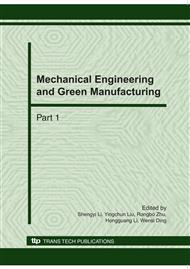p.252
p.260
p.265
p.271
p.276
p.282
p.287
p.292
p.296
The Complex Dynamical Behaviors of Lateral Vibration of Tire
Abstract:
Considering the nonlinear characteristic of suspension stiffness and the effect of road input, a dynamic model of tread’s lateral vibration is established based on lateral-vertical force coupling, and the complex dynamic behavior of the system is analyzed. The results show that: the lateral self-excited vibration of tread is a kind of complex quasi-periodic motion caused by Hopf bifurcation of system, which oscillating range increases at first, then decreases with vehicle speed; the quasi-periodic motion occurs only at specific speed range, while not happen when speed is too low or high.
Info:
Periodical:
Pages:
276-281
Citation:
Online since:
October 2010
Keywords:
Price:
Сopyright:
© 2010 Trans Tech Publications Ltd. All Rights Reserved
Share:
Citation:


